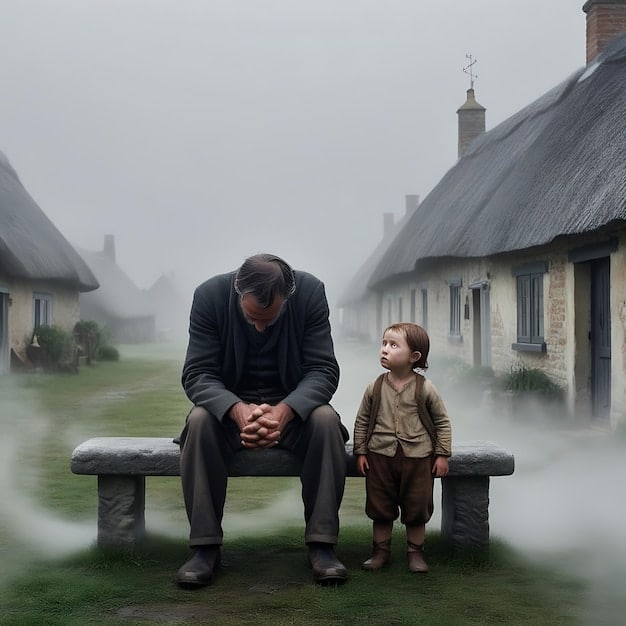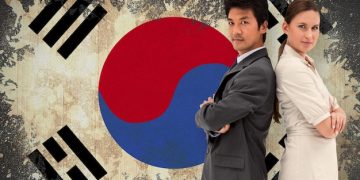Beyond Romance: Social Commentary in Korean Dramas

Anúncios
Today’s Korean dramas transcend typical romance, offering sharp social commentary on issues like class inequality, gender roles, mental health, and corporate corruption, reflecting and shaping societal norms.
Anúncios
Korean dramas, or K-dramas, have captivated global audiences with their compelling narratives. However, they offer much more than just romance. Deep within these stories are incisive commentaries on contemporary social issues. This article explores how K-dramas reflect and critique South Korean society, making them culturally significant beyond mere entertainment.
The Rise of Socially Conscious Storytelling in K-Dramas
Korean dramas have evolved significantly over the years. Early K-dramas often focused on traditional romantic narratives, but today’s dramas are increasingly incorporating complex social themes. This shift reflects a growing desire among viewers to see their own realities and concerns represented on screen.
Anúncios
The integration of social commentary into K-dramas is not accidental. Writers and producers recognize the power of television to influence public discourse and raise awareness about important issues. By embedding these themes within popular storylines, they reach a broad audience, prompting conversations and encouraging critical thinking about societal norms.
Addressing Class Inequality
One of the most pervasive themes in contemporary K-dramas is class inequality. Dramas often depict the stark contrast between the wealthy elite and the struggling working class, highlighting the systemic barriers that perpetuate social stratification.
- Parasite (TV series): Inspired by the Oscar-winning film, a drama that delves into the themes of social inequality and ambition.
- Sky Castle: Explores the cutthroat competition among wealthy families to get their children into top universities, revealing the pressures and privileges associated with elite education.
- Itaewon Class: Follows an ex-convict who opens a street food business in Seoul’s vibrant Itaewon district, challenging corporate giants and fighting for social justice.

These dramas not only entertain but also spark dialogue about the challenges faced by different socioeconomic groups and the need for greater social mobility.
Challenging Gender Roles and Feminism
K-dramas are increasingly challenging traditional gender roles and exploring feminist themes. This is particularly significant in a society where patriarchal norms have historically been deeply entrenched.
By portraying strong, independent female characters and addressing issues such as workplace discrimination and gender-based violence, K-dramas are contributing to a broader cultural conversation about gender equality. These narratives empower viewers to question and redefine traditional expectations.
Portraying Strong Female Leads
Many recent K-dramas feature female protagonists who defy traditional stereotypes. These characters are ambitious, intelligent, and capable, often excelling in fields traditionally dominated by men.
- Search WWW: A workplace drama that revolves around three successful women in the competitive world of internet companies, showcasing their professional and personal lives.
- Mine: Focuses on two women from a chaebol family who strive for true liberation from societal expectations and prejudices.
- Hyena: Features a fiercely independent and unorthodox female lawyer who stops at nothing to win her cases, challenging the male-dominated legal profession.
These portrayals provide positive role models for viewers and encourage a more nuanced understanding of female empowerment and ambition.
Mental Health Awareness and Representation
Another significant development in K-dramas is the increasing focus on mental health. These dramas are breaking down stigmas and promoting greater understanding and empathy towards individuals struggling with mental health issues.
By sensitively portraying characters dealing with anxiety, depression, and other mental health challenges, K-dramas are encouraging viewers to seek help and support. This representation is crucial in a society where mental health is often stigmatized and neglected.
Normalizing Conversations About Mental Health
Dramas are increasingly showing characters attending therapy, seeking professional help, and engaging in open conversations about their mental health. This normalization is vital in reducing the stigma associated with mental illness.
- It’s Okay to Not Be Okay: A dark fantasy romance that explores the emotional recovery of a children’s book author with an antisocial personality disorder and a psychiatric caregiver.
- Soul Mechanic: Tells the story of psychiatrists who believe in healing patients through empathy and communication rather than just medication.
- My Mister: Depicts a man and woman struggling with difficult lives who find solace and support in each other, highlighting the importance of human connection in overcoming adversity.

These narratives help viewers understand that it is okay to seek help and that mental health is just as important as physical health.
Critiques of Corporate Culture and Corruption
K-dramas often provide scathing critiques of corporate culture and corruption, exposing the dark underbelly of South Korea’s economic and political systems.
These dramas depict the abuse of power, unethical business practices, and the exploitation of workers, shedding light on the systemic issues that plague many industries. By highlighting these problems, they encourage greater accountability and transparency.
Exposing Power and Corruption
Dramas often portray corrupt CEOs, manipulative politicians, and compromised law enforcement officials, revealing the extent to which corruption can permeate society.
- Chief Kim: An accountant who fights against corporate corruption and injustice within a large company.
- Stranger: A prosecutor who lacks empathy teams up with a passionate female detective to uncover corruption within the prosecutor’s office and the police force.
- Vincenzo: A Korean-Italian mafia lawyer who returns to South Korea and uses his unconventional methods to take down powerful villains and corrupt corporations.
These narratives serve as a form of social commentary, prompting viewers to reflect on the ethical responsibilities of those in power.
Family Dynamics and Generational Differences
K-dramas frequently explore complex family dynamics and generational differences, reflecting the changing social landscape of South Korea.
These dramas delve into issues such as the pressure to conform to traditional family expectations, the challenges of intergenerational communication, and the evolving roles of family members in modern society. They resonate with viewers who grapple with similar issues in their own lives.
Exploring Generational Conflicts
Dramas often depict conflicts between parents and children regarding career choices, marriage expectations, and lifestyle preferences, highlighting the tension between traditional values and modern aspirations.
By exploring these conflicts, K-dramas provide a platform for discussing the challenges and opportunities of navigating different generational perspectives.
The Impact on Global Audiences
The social commentary in K-dramas extends beyond South Korea, resonating with global audiences who face similar issues in their own societies.
Viewers from around the world connect with the universal themes of inequality, justice, and human connection, finding solace and inspiration in these narratives. K-dramas have become a powerful tool for cross-cultural understanding and dialogue.
| Key Point | Brief Description |
|---|---|
| 🎭 Class Inequality | Dramas depict the contrast between the wealthy elite and the working class. |
| 👩💼 Gender Roles | Challenging traditional roles with strong, independent female leads. |
| 🧠 Mental Health | Breaking stigmas and promoting understanding of mental health issues. |
| 🏢 Corporate Corruption | Exposing unethical business practices and abuse of power in corporations. |
FAQ
▼
K-dramas frequently tackle issues like class inequality, gender discrimination, mental health stigmas, corporate corruption, and generational conflicts, reflecting contemporary South Korean society.
▼
Many K-dramas are now portraying strong, independent female characters who challenge traditional gender roles, advocating for gender equality in various social spheres, and female empowerment.
▼
Mental health representation in K-dramas helps normalize conversations, reduce stigma, and encourage viewers to seek help for mental health issues, fostering a more supportive society.
▼
Social commentaries in K-dramas raise awareness, prompt critical thinking, and encourage dialogue about societal norms, influencing viewers to challenge existing structures and advocate for change.
▼
K-dramas often critique corporate corruption by exposing unethical practices, abuse of power, and exploitation, urging for greater transparency and accountability within corporate environments.
Conclusion
In conclusion, today’s Korean dramas are much more than just romantic comedies. They serve as a powerful medium for social commentary, reflecting and critiquing various aspects of South Korean society and resonating with global audiences who share similar concerns. By addressing issues such as inequality, gender roles, mental health, and corruption, K-dramas contribute to important cultural conversations and inspire viewers to think critically about the world around them. The enduring popularity of K-dramas lies not only in their entertainment value but also in their ability to connect with audiences on a deeper, more meaningful level.





